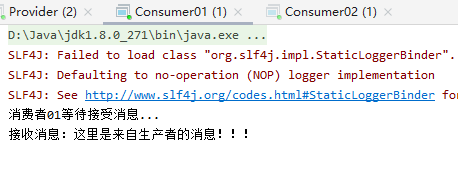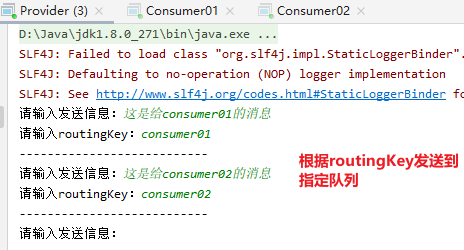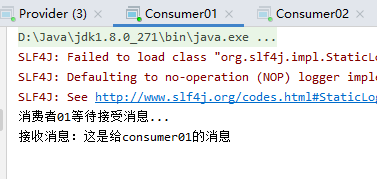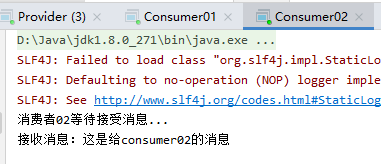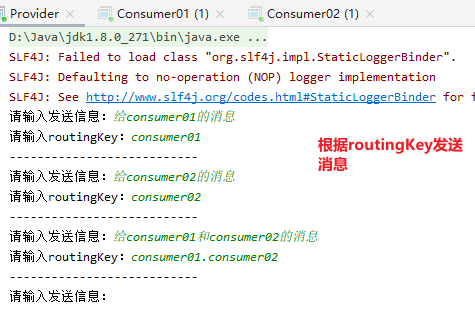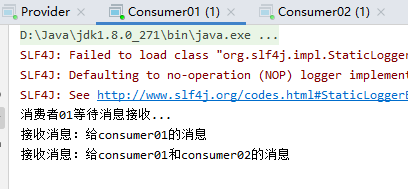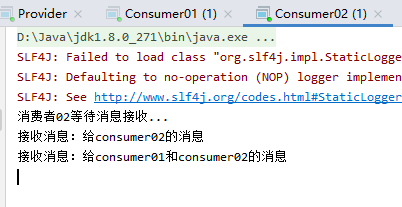1
2
3
4
5
6
7
8
9
10
11
12
13
14
15
16
17
18
19
20
21
22
23
24
25
26
27
28
29
30
31
32
33
34
|
public class Consumer01 {
public static void main(String[] args) throws Exception{
Connection connection = RabbitMQUtil.getConnection();
Channel channel = connection.createChannel();
String queueName = channel.queueDeclare().getQueue();
channel.queueBind(queueName, "fanoutExchange", "");
System.out.println("消费者01等待接受消息...");
channel.basicConsume(
queueName,
(consumerTag, message) -> {
System.out.println("接收消息:" + new String(message.getBody()));
},
consumerTag -> {
System.out.println("消息接收异常!");
}
);
}
}
|


